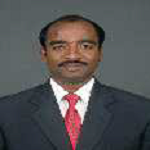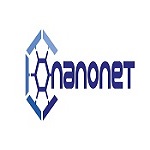
Materials Meeting 2017

Theme: Effect of smart material science in our daily life and its advancement
Track 1: Materials Science and Engineering
Materials Science and Engineering is an acclaimed logical train, extending in late decades to encompass polymers, earthenware production, glass, composite materials and biomaterials. Materials science and building, includes the revelation and plan of new materials. A considerable lot of the most squeezing logical issues people as of now face are because of the constraints of the materials that are accessible and, subsequently, real achievements in materials science are probably going to influence the eventual fate of innovation fundamentally. Truth be told, all new and changed materials are frequently at the heart of item development in exceedingly assorted applications. The worldwide market is anticipated to reach $6,000 million by 2020 and hotel a CAGR of 10.2% in the vicinity of 2015 and 2020 as far as worth.
Related Societies:
Society of Materials Science, International Organisation of Materials, The Materials Information Society (ASM International),The Materials Research Society (MRS), The Minerals, Metals & Materials Society (TMS), Federation of Materials Societies, Society of Nanotechnology, Metals and Minerals Societies, Society for Biomaterials, Society for Advancement of Material and process Engineering, American National Standards Institute Nanotechnology Panel, National Nanotechnology Center (NANOTEC)
Track 2: Nanomaterials and Nanotechnology
Nanotechnology is the treatment of matter on a nuclear, sub-atomic, and supramolecular scale. Materials researchers and architects work to comprehend those property changes and use them in the handling and fabricate of materials at the nanoscale level. Nanomaterials inquire about adopts a materials science-based strategy to nanotechnology, affecting advances in materials metrology and combination which have been created in support of microfabrication research. Materials with structure at the nanoscale level to have interesting optical, electronic, or mechanical properties. Albeit quite a bit of nanotechnology's potential still remains un-used, interest in the field is blasting. The U.S. government disseminated more than a billion dollars to nanotechnology inquire about in 2005 to discover new advancements in Nanotechnology. China, Japan and the European Union have spent comparable sums.
Related Societies:
Society of Materials Science, International Organisation of Materials, The Materials Information Society (ASM International),The Materials Research Society (MRS), The Minerals, Metals & Materials Society (TMS), Federation of Materials Societies, Society of Nanotechnology, Metals and Minerals Societies, Society for Biomaterials, Society for Advancement of Material and process Engineering, American National Standards Institute Nanotechnology Panel, National Nanotechnology Center (NANOTEC)
Track 3: Biomaterials and Medical Devices
Biomaterials from social insurance perspective can be characterized as materials those have some novel properties that makes them fitting to come in quick relationship with the living tissue without inspiring any antagonistic safe dismissal responses. Biomaterials are in the administration of humanity through antiquated circumstances however ensuing advancement has made them more adaptable and has expanded their utilization. Research is being performed to enhance the current techniques and for the development of new methodologies. With the present advance in biomaterials we can expect a future medicinal services which will be financially practical to us.
Track 4: Polymer Science and Technology
Material science has a more extensive scope of utilizations which incorporates earthenware production, composites and polymer materials. Holding in earthenware production and glasses utilizes both covalent and ionic-covalent sorts with SiO2 as a fundamental building square. Earthenware productions are as delicate as mud or as hard as stone and cement. Most glasses contain a metal oxide melded with silica. Polymers are likewise a critical piece of materials science. Polymers are the crude materials which are utilized to make what we regularly call plastics. Claim to fame plastics are materials with particular qualities, for example, ultra-high quality, electrical conductivity, electro-fluorescence, high warm steadiness. Carbon fibre fortified plastic market came to $17.3 billion in 2014, and further the market is relied upon to develop at a five-year CAGR (2015 to 2020) of 12.3%, to reach $34.2 billion in 2020
Related Societies:
Society of Materials Science, International Organisation of Materials, The Materials Information Society (ASM International),The Materials Research Society (MRS), The Minerals, Metals & Materials Society (TMS), Federation of Materials Societies, Society of Nanotechnology, Metals and Minerals Societies, Society for Biomaterials, Society for Advancement of Material and process Engineering, American National Standards Institute Nanotechnology Panel, National Nanotechnology Center (NANOTEC)
Track 5: Ceramics and Composite Materials
Pottery as of now incorporate household, modern and building items, and additionally a wide scope of fired craftsmanship. In the twentieth century, new earthenware materials were created for use in cutting edge artistic designing, for example, in semiconductors. Composite materials are for the most part utilized for structures, extensions and structures like watercraft frames, swimming pool boards, race auto bodies, shower slows down, baths, stockpiling tanks, impersonation rock and refined marble sinks and ledges. The most developed cases perform routinely on shuttle in requesting conditions. Presently remaining at USD 296.2 billion, the earthenware production market is figure to develop to USD 502.8 billion by 2020, as each industry accomplishes updated fabricating productivity alongside high sustainable power source effectiveness.
Related Societies:
Society of Materials Science, International Organisation of Materials, The Materials Information Society (ASM International),The Materials Research Society (MRS), The Minerals, Metals & Materials Society (TMS), Federation of Materials Societies, Society of Nanotechnology, Metals and Minerals Societies, Society for Biomaterials, Society for Advancement of Material and process Engineering, American National Standards Institute Nanotechnology Panel, National Nanotechnology Center (NANOTEC)
Track 6: Physics and Chemistry of Materials
Materials Chemistry gives the circle between nuclear, sub-atomic and supermolecular conduct and the valuable properties of a material. It lies at the centre of various compound utilizing businesses. A lot of properties of electrical, attractive particles and substance materials develop from this level of structure. The route in which the particles and atoms are reinforced and sorted out is key to concentrate the properties and conduct of any material. The conjecture for R&D development in the compound and propelled materials industry demonstrates the enhancing worldwide economy and the key markets the business serves. General worldwide R&D is estimate to extend at a somewhat higher 4.7% rate to $45 billion in 2014.
Related Societies:
Society of Materials Science, International Organisation of Materials, The Materials Information Society (ASM International),The Materials Research Society (MRS), The Minerals, Metals & Materials Society (TMS), Federation of Materials Societies, Society of Nanotechnology, Metals and Minerals Societies, Society for Biomaterials, Society for Advancement of Material and process Engineering, American National Standards Institute Nanotechnology Panel, National Nanotechnology Center (NANOTEC)
Track 7: Mechanics, Characterization Techniques and Equipment
Portrayal, when utilized as a part of materials science, alludes to the more extensive and more extensive process by which a material's structure and properties are checked and measured. It is a major procedure in the field of materials science, without which no logical comprehension of building materials could be as curtained. Spectroscopy alludes to the estimation of radiation force as an element of wavelength. Microscopy is the specialized field of utilizing magnifying lens to view questions that can't be seen with the exposed eye. Appropriate testing of material can make the material more adaptable and strong. Inquire about demonstrates the worldwide material testing hardware showcase created incomes of $510.8 million in 2011, developing at a minor rate of 3.1% over the earlier year.
Related Societies:
Society of Materials Science, International Organisation of Materials, The Materials Information Society (ASM International),The Materials Research Society (MRS), The Minerals, Metals & Materials Society (TMS), Federation of Materials Societies, Society of Nanotechnology, Metals and Minerals Societies, Society for Biomaterials, Society for Advancement of Material and process Engineering, American National Standards Institute Nanotechnology Panel, National Nanotechnology Center (NANOTEC)
Track 8: Materials for Energy storage
Energy storage is the capture of energy produced at one time for use at a later time. A device that stores energy is sometimes called an accumulator. Energy comes in multiple forms including radiation, chemical, gravitational potential, electrical potential, electricity, elevated temperature, latent heat and kinetic. Energy storage involves converting energy from forms that are difficult to store to more conveniently or economically storable forms. Bulk energy storage is dominated by pumped hydro, which accounts for 99% of global energy storage. Efficient energy storage is one of the key points to be solved for a successful development of renewable energies. In addition, the increasing demand for energy sources to power various portable equipment for microelectronics, safety, medical applications, army, smart phones, telecommunications, tools, etc… but also large size applications like electric vehicles and smart grids requires new high performance materials. Development of next-generation energy technologies faces the challenge of finding and integrating new materials at a faster rate.
Related Societies:
Society of Materials Science, International Organisation of Materials, The Materials Information Society (ASM International),The Materials Research Society (MRS), The Minerals, Metals & Materials Society (TMS), Federation of Materials Societies, Society of Nanotechnology, Metals and Minerals Societies, Society for Biomaterials, Society for Advancement of Material and process Engineering, American National Standards Institute Nanotechnology Panel, National Nanotechnology Center (NANOTEC)
Track 9: Mining, Metallurgy and Materials Science
Metallurgical Engineering involves the study, innovation, design, implementation, and improvement of processes that transform mineral resources and metals into useful products that improve the quality of our lives. Metals provide the foundation for our modern way of life. We need metals to generate electricity to drive our electronic age society as well as for vehicles, buildings, machines, and home appliances. It is the art of extracting metals from ores, refining them, and preparing them for use. The process consists of altering the chemical nature of the minerals in order to separate the metal from its sulphuric compounds, oxides, silicates or carbonates. Material science plays a important role in metallurgy too. Mining consists of extracting minerals and other materials selectively from the earth's crust, often in large quantities just so that small amounts of the desired product can be recovered. Four basic types of mining method currently exist.
Metallurgical engineers work to meet the mineral and metal product needs of our modern civilization in an environmentally responsible way by designing processes and products that minimize waste, maximize energy efficiency, increase performance, and facilitate recycling Advancement. Mining is discipline that involves the practice, the theory, the science, the technology, and application of extracting and processing minerals from a naturally occurring environment. Mining engineering also includes processing minerals for additional value.A complete knowledge of metallurgy can help us to extract the metal in a more feasible way and can used to a wider range. Global Metallurgy market will develop at a modest 5.4% CAGR from 2014 to 2020.
Related Societies:
Society of Materials Science, International Organisation of Materials, The Materials Information Society (ASM International),The Materials Research Society (MRS), The Minerals, Metals & Materials Society (TMS), Federation of Materials Societies, Society of Nanotechnology, Metals and Minerals Societies, Society for Biomaterials, Society for Advancement of Material and process Engineering, American National Standards Institute Nanotechnology Panel, National Nanotechnology Center (NANOTEC)
Track 10: Surface Science and Engineering
The examination of physical and synthetic process that occurs by blending of two stages, including solid–liquid/solid–gas/solid–vacuum/liquid–gas interfaces is named as Surface science and the down to earth utilization of surface science in related fields like science and material science is known as Surface Engineering. Strategies required in Surface designing are spectroscopy of techniques X-beam photoelectron spectroscopy, Auger electron spectroscopy, low-vitality electron diffraction, electron vitality misfortune spectroscopy, warm desorption spectroscopy, particle disseminating spectroscopy, auxiliary particle mass spectrometry, double polarization interferometry, and so forth.
Related Societies:
Society of Materials Science, International Organisation of Materials, The Materials Information Society (ASM International),The Materials Research Society (MRS), The Minerals, Metals & Materials Society (TMS), Federation of Materials Societies, Society of Nanotechnology, Metals and Minerals Societies, Society for Biomaterials, Society for Advancement of Material and process Engineering, American National Standards Institute Nanotechnology Panel, National Nanotechnology Center (NANOTEC)
Track 11: Biomaterials and Tissue Engineering
Biomaterials can be arranged either from nature or incorporated in the research facility utilizing an assortment of substance strategies using metallic segments, polymers, earthenware production or composite materials. They are frequently utilized or potentially balanced for a therapeutic application, and along these lines involve entire or some portion of a living structure or biomedical gadget which performs, enlarges, or replaces a characteristic capacity. Biomaterials are additionally utilized as a part of dental applications, surgery, and medication conveyance. For instance, a develop with impregnated pharmaceutical items can be set into the body, which allows the drawn out arrival of a medication over an augmented timeframe. A biomaterial may likewise be an autograft, allograft or xenograft utilized as a transplant material.
Related Societies:
Society of Materials Science, International Organisation of Materials, The Materials Information Society (ASM International),The Materials Research Society (MRS), The Minerals, Metals & Materials Society (TMS), Federation of Materials Societies, Society of Nanotechnology, Metals and Minerals Societies, Society for Biomaterials, Society for Advancement of Material and process Engineering, American National Standards Institute Nanotechnology Panel, National Nanotechnology Center (NANOTEC)
Track 12: Nano Medicine
Nanomedicine is the application of nanotechnology (the engineering of tiny machines) to the prevention and treatment of disease in the human body. It can be used to Deliver medicine, Find and treat disease, Repair damaged cells. Nanomedicine is usefull for Faster diagnosis of many ailments, More precise treatments of conditions such as cancer, Repair tissue deep within the body, Target only diseased organs without destroying healthy tissue. Nanomedicine is applied in Drug Delivery, Cancer Diagnosis and Treatment and Cell Feedback.
Related Societies:
Society of Materials Science, International Organisation of Materials, The Materials Information Society (ASM International),The Materials Research Society (MRS), The Minerals, Metals & Materials Society (TMS), Federation of Materials Societies, Society of Nanotechnology, Metals and Minerals Societies, Society for Biomaterials, Society for Advancement of Material and process Engineering, American National Standards Institute Nanotechnology Panel, National Nanotechnology Center (NANOTEC)
Track 13:Advanced Materials
Advanced Materials Science or Materials Engineering is the study of all of the materials we see around us every day. Materials Science or Engineering forms a bridge between the sciences and engineering. It allows theory to be put into practice in a way which benefits everybody. Materials Scientists or Engineers look at all of the different groups of materials, metals and alloys, polymers, ceramics and composites. It is The Creation of Advanced Materials at The Molecular or Nuclear Measure For the purpose of advancing technology, developing further efficient products, creating novel manufacturing technologies, or improving the human knowledge. The advanced material industry encompasses a full cycle form materials extraction, Primary production, processes development and material characterisation to product fabrication, testing .Which expended in composite materials and biomaterials. The development of advanced material is associated with the generation of new knowledge and intellectual property, a combination of the association with advanced materials.
Related Societies:
Society of Materials Science, International Organisation of Materials, The Materials Information Society (ASM International),The Materials Research Society (MRS), The Minerals, Metals & Materials Society (TMS), Federation of Materials Societies, Society of Nanotechnology, Metals and Minerals Societies, Society for Biomaterials, Society for Advancement of Material and process Engineering, American National Standards Institute Nanotechnology Panel, National Nanotechnology Center (NANOTEC)
Track 14: Carbon materials
Carbon has a variety of allotropes and structures of various dimensionalities due to the ability of hybridization in sp, sp2, and sp3, which makes it the most versatile element in the periodic table. Carbon materials touch every aspect of our daily life in some way. Its unique properties make them widely used in many fields including energy, environment, biology, medicine, and so forth. Carbon-based materials have attracted significant attention, especially by discoveries of fullerenes, followed by carbon nanotubes and graphene. Activated carbons are used for water and air purification, carbon black is used to reinforce tires, carbon fiber composites are used to manufacture ultra-light graphite sporting goods and aircraft brakes, carbon foams are used to make fire retardant insulation, and petroleum coke is used to manufacture graphite electrodes for recycling iron and steel.
Related Societies:
Society of Materials Science, International Organisation of Materials, The Materials Information Society (ASM International),The Materials Research Society (MRS), The Minerals, Metals & Materials Society (TMS), Federation of Materials Societies, Society of Nanotechnology, Metals and Minerals Societies, Society for Biomaterials, Society for Advancement of Material and process Engineering, American National Standards Institute Nanotechnology Panel, National Nanotechnology Center (NANOTEC)
About Conference
Meetings International proudly announces the Global Meeting On Materials Science & Nanotechnology. With a theme of “Effect of Material Science in our daily life and its advancement ". The conference provides a Global Platform for Materials Science, Ceramic, Metallurgy, Chemical, Pharma, Biotech, Medical and Professionals to Exchange Ideas, Knowledge and Networking at its 100+ International Conferences.
In this overwhelming satisfaction, Meeting International feel honoured to denote the next Materials Meeting 2017 conference, the Global Meeting On Materials Science & Nanotechnology during December 11-12, 2017 in Dubai, UAE with the theme: Effect of smart material Science in our daily life and its advancement.
Are you searching for a haunt, where you can explore the techniques and theories of Materials Science..??? Here is your halt… Materials Meeting 2017 is the exemplary meeting for the materials researchers and students where you can discuss and learn new strategies that are happening in the world. And we assure you that, Materials Meeting 2017 will be the best place to meet the Eminent Researchers of Materials Science. And Dubai is the populous tourist place where you can give your family a wonderful tourism experience.
Market Analysis
Title: Global Meeting on Materials Science & Nanotechnology
Venue: Dubai, UAE Dec 11-12, 2017
Theme: Effect of smart material science in our daily life and its advancement
Summary:
Materials science is a relatively new and very broad field. The basic knowledge of the materials engineering was emerged in the 19th century when it was established that the thermodynamic characteristics related to the atomic structure are affected by the physical properties of a material.
The new fields of nanotechnology and biomaterials are providing materials scientists with an entirely new palette of molecular, organic, biological and inorganic building blocks to design and assemble Nano-engineered materials with unique functionalities. Nanotechnology is being applied to almost every field imaginable, including electronics, magnetics, optics, information technology, materials development and biomedicine.
The organizing committee is gearing up for an exciting and informative conference program this year also which includes plenary lectures, symposia, workshops on a variety of topics, poster presentations and various programs for participants from all over the world. We are honored to invite you all to attend and register for the “Global Meeting on Materials Science & Nanotechnology (Materials Meeting 2017)” which is scheduled for December 11-12, 2017 at Dubai, UAE with the theme: Effect of smart material science in our daily life and its advancement.
Importance & Scope:
Materials science has evolved from materials formed from metals, ceramics, polymers and their various composites, in recent years there has been increasing focus on creating novel nanostructured materials, for instance by taking inspiration from nature. Materials and Nanotechnology is a broad, diverse and multidisciplinary is attracting many students and researchers to explore in this field. Materials Meeting 2017 covers the areas of Materials Science and Engineering, Energy Materials, Mining and Metallurgy, Nano medicine, Carbon Materials, Surface Science and Engineering, Biomaterials and Tissue Engineering, Materials Chemistry, Polymer Technology, Emerging fields in Materials Science and Nanotechnology.
About Venue:
Dubai is the largest and most populous city in the United Arab Emirates (UAE). It is located on the southeast coast of the Persian Gulf and is the capital of the Emirate of Dubai, one of the seven emirates that make up the country. Dubai has been called the "shopping capital of the Middle East". Dubai alone has more than 70 shopping centres, including the world's largest shopping centre, Dubai Mall.Dubai Creek Park in Dubai Creek also plays a vital role in Dubai tourism .Ski Dubai is a large indoor skiing facility at Mall of the Emirates, offering snowboarding, ski lessons, a children's play area and a cafe.
BurjKhalifa is 828 metres (2,717 ft.) high skyscraper in Dubai, and the tallest building in the world. The Palm Jumeirah is an artificial archipelago, created using land reclamation by Nakheel, a company owned by the Dubai government. The Palm Jumeirah is the smallest and the original of three Palm Islands, and it is located on the Jumeirah coastal area of Dubai. It was built between 2001 and 2006.
Come and join us in Dubai for Materials Meeting 2017….
Why to attend:
Materials Meeting 2017 offers a fantastic opportunity to meet and make new contacts in the field of Materials Science and Engineering, by providing collaboration spaces and break-out rooms with tea and lunch for delegates between sessions with in valuable networking time for you. It allows delegates to have issues addressed on Materials Science by recognized global experts who are up to date with the latest developments in the Materials Science field and provide information on new techniques and technologies. This International Materials Science conference will feature world renowned keynote speakers, plenary speeches, young research forum, poster presentations, technical workshops and career guidance sessions.
The joy of attending Materials Meeting 2017 brings with it improvement and incremental growth in your approach to do things, in the broader manner to see things and the beauty to live international diversity.
Come be Part of it...!
- Materials Scientists/Research Professors/ Nanotechnologists
- Junior/Senior research fellows of Materials Science/ Nanotechnology/ Polymer Science/
- Members of different Nanotechnology & Materials science associations
- Materials Science & Nanotechnology Students
- Physicists/Chemists
- Materials Engineers
- Members of Materials Science Associations
- Members of Nanotechnology Associations
- Biotechnology
- Directors of chemical companies & Polymer companies
- Junior/Senior research fellows of Materials Science/ Nanotechnology/ Polymer Science/
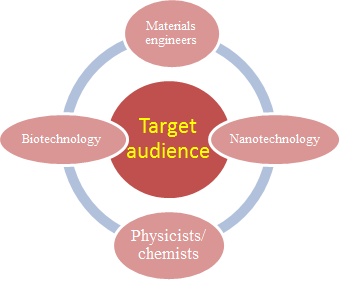
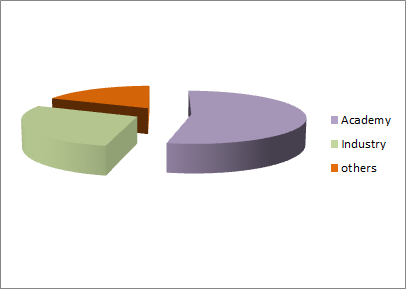
- University of Dubai.
- Emirates Aviation University.
- Heriot-Watt University Dubai.
- American University in Dubai.
- University of Wollongong in Dubai (UOWD).
- Khalifa University.
Statistical Representation of universities:
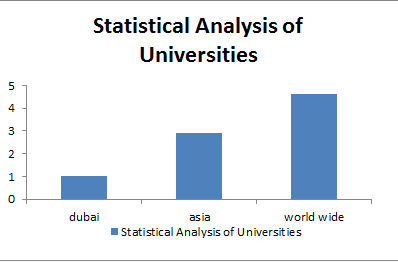
Major Associations related to Materials Science & Nanotechnology:
- Materials Science and Engineering Association
- Society of Materials Science
- National Nanotechnology Center (NANOTEC), Thailand
- Society of Nanotechnology
- International Organisation of Materials
- The Materials Information Society (ASM International)
- National Nanotechnology Initiative (United States)
- I National Center for Nanoscience and Technology (China)
- American Composites Manufacturers Association
- The Materials Research Society (MRS)
- The Minerals, Metals & Materials Society (TMS)
- NanoNed
- National Institute for Nanotechnology (Canada)
- American National Standards Institute Nanotechnology Panel (ANSI-NSP)
- Russian Nanotechnology Corporation
Companies involved in Material science & Nanotechnlogy:
- CeramTec
- Coors Technical Ceramics
- Eastern Mineral and Chemicals
- ECC International, CERAMIC GROUP
- Feldspar
- International Ceramics
- Reade Advanced Materials
- Sialon Technical Ceramics
- Tech Ceram
- Zircar
Materials Manufacturing Aluminum:
- Alcan
- AlfinitiAllied Metal
- Almetals
- Aluminum Association
- ALCOA
- ALCOE
- Alumax
- Aluminum Extrusion Consultant Inc.
- Aluminum Industry
- AlumiTech
- Elval
- KaiserMetal Matrix Cast Composites
Other Metals, Distributers, etc.....
- Allvac
- AlloyTech
- American Metals Market
- ArtMetal Resource To Metalworking
- ASM's List of Materials Producers
- High Performance Alloys
- Metal Prices
Materials Testing and Services:
- Accurel
- Advanced Materials Instruments and Analysis
- Advanced Plastic and Materials Testing
- Advanced Surface Microscopy
- ASTON Metallurgical Services
- BendTec
- Bridge Technology
- Crucible Materials Corp.
- Columbus Metallurgical
- Corrosion Com
- Fitzsimmons & Associates, Inc.
- IBM
- Ithaca Materials Research
- Massachusetts Materials Research
Global Market of Materials & Nanotechnology:
Growth forecast for materials:
Today, many materials chemists are synthesizing functional device materials, and the discipline is often seen as directed towards producing materials with function—electrical, optical, or magnetic. Material chemistry is involved in the designing and processing of materials. Global market for catalysts is expected to reach $28.5 billion by 2020, growing at a CAGR (2015 to 2020) of over 3%. Asia-Pacific is having the largest market for catalysts accounting for more than 35% share.
Ceramic Matrix Composites and Carbon Matrix Composites:
The global market for ceramic and carbon matrix composites will grow from $3.9 billion in 2016 to nearly $6.2 billion by 2021 with a compound annual growth rate (CAGR) of 9.4% for the period of 2016-2021.
The automotive aluminium market is projected to grow from USD 47.91 Billion in 2016 to USD 111.80 Billion by 2026, at a CAGR of 8.8% from 2016 to 2026.Increased demand for lightweight and efficient materials from the automotive industry is fuelling the demand for automotive aluminium as it not only reduces weight of automobile components, but also of the complete body of above 50%
Statistics:
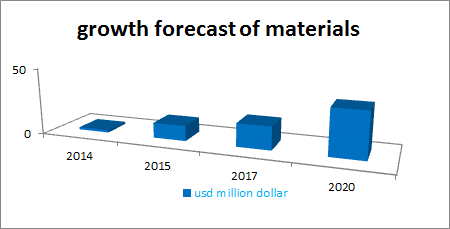
Nanotechnology:
The U.S. government conveyed more than a billion dollars to nanotechnology inquire about in 2005 to discover new advancements in nanotechnology. China, Japan and the European Union have spent comparative sums. The trusts are the same on all fronts: to inspire oneself off a surface on a developing worldwide market that the National Science Foundation appraisals will be justified regardless of a trillion dollars. The worldwide market for enacted carbon totaled $1.9 billion.
Global consumption of nanocomposites is expected to grow in unit terms from nearly 225,060 metric tons in 2014 to nearly 584,984 metric tons in 2019, a compound annual growth rate (CAGR) of 21.1% for the period of 2014 to 2019. The global market for nanofiber product reached $203.2 million and $276.8 million in 2013 and 2014, respectively. This market is projected to grow from $383.7 million in 2015 to nearly $2.0 billion in 2020, representing a compound annual growth rate (CAGR) of 38.6% between 2015 and 2020. The global nanotechnology market in environmental applications reached $23.4 billion in 2014. This market is expected to reach about $25.7 billion by 2015 and $41.8 billion by 2020, registering a compound annual growth rate (CAGR) of 10.2% from 2015 to 2020.
Statistics:
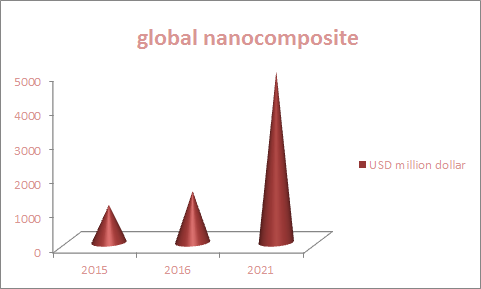
- Mining, Metallurgy and Materials Science
- Materials for Energy storage
- Advanced Materials
- Materials Science and Engineering
- Nanomedicine
- Carbon materials
- Nanomaterials and Nanotechnology
- Biomaterials and Medical Devices
- Polymer Science and Technology
- Ceramics and Composite Materials
- Physics and Chemistry of Materials
- Mechanics, Characterization Techniques and Equipments
- Surface Science and Engineering
- Biomaterials and Tissue Engineering
- Nano Research & Applications
- Research & Reviews: Journal of Pharmaceutics and Nanotechnology
- Polymer Science








